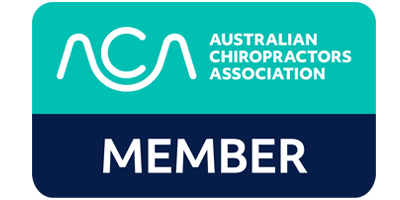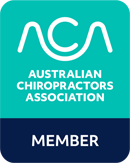After more than twenty years servicing the local chiropractic community and with over fifty years of chiropractic experience our two chiropractors share their FAQ that people have when they can to see us.
1. An obvious spinal problem: Most people associate chiropractic care with headaches, neck and back problems. Yes we have great success with these, AND the spine houses the nervous system and by keeping your nerve supply healthy your whole body benefits as well. With chiropractic great health is a welcome side-effect. 2. Natural drug-free health care: Those who wish to avoid risky drugs or irreversible surgery will often visit our office first. Chiropractic is a safer, more natural approach to better health, and prevention is better than cure every time. 3. Maintenance and prevention: If you’ve had chiropractic care elsewhere then you already know the value of ongoing chiropractic care. We’d be honored to be your personal chiropractor and help you to stay optimally and vibrantly well. 4. Stay well: We experience life through our nervous system. We are great at spinal health and we are even better at keeping you well. Those who want to optimise their health to be all that they can be and perform at their best can contact us now at LHCC.
In the early days of chiropractic, patients came to see us with a myriad of body disorders. The first patient of chiropractic was healed from partial deafness, the second from a heart condition. It was never just about relief from back pain. Chiropractors correct subluxations and correcting subluxations may also help a broad range of secondary complaints, from spinal pain to headaches, and from fatigue to arthritis and more. So you don’t need to have a specific complaint to benefit from chiropractic.
Achieving your best potential in health, as well as in life, are reasonable and valid goals to have. At LHCC we specialise in on-going preventive and family wellness care, where being the best you can ever be is our central focus. This kind of chiropractic care can be highly effective and rewarding for people of all ages and walks of life, from infants to the elderly.
Correcting the cause of a problem is logical in life as well as in healing. Our primary intention and goal is therefore to make you stronger, healthier and happier and as well as you have ever been in your life. With a fully functioning spine and nervous system you are then free to reach your fullest potential in life.
The key to chiropractic care is the spinal adjustment. This is the way doctors of chiropractic correct subluxations and regular or periodic adjustments can then keep you healthy and well.
Spinal adjustment and chiropractic adjustment are terms used by chiropractors to describe a gentle and specific thrust with the intention of correcting spinal misalignments that interfere with the life force of the body that is carried through the nerves to all parts of the body.
The definition of this procedure describes the use of a load (force) to specific body tissues with therapeutic intent. This ‘load’ is traditionally used by hand, and can vary in its velocity, amplitude, duration, frequency, and body location. This intention forms the legal and philosophical foundation of the profession.
You don’t need a referral from a medical doctor or anyone else to begin chiropractic care, unless you are a Veteran and then a referral from your doctor will be helpful.
Your fastest and easiest way to vibrant health is to schedule your appointment with the doctor is to contact our office at (07) 3801 5288.
One of our staff members will promptly schedule you with a convenient time to see the doctor. For your convenience we have included an office map on our home page.
Our knowledgeable staff can field most questions over the telephone. If you want to explore a concern more privately then just ask and a doctor can call you back. Please don’t delay as the majority of spine or general health conditions tend to worsen or recur without the appropriate care. The sooner you take action, the sooner we may be able to help you.
If you still unsure then you can arrange a private consultation. You can use this appointment to describe your health issue and share your goals. This is often helpful for you to determine if you’re likely to be a good candidate for chiropractic care. There are many different kinds of chiropractic techniques as well as philosophies that a chiropractor may subscribe to.
- After a bit of research on the internet, which may be somewhat confusing due to the variety of healing approaches available in chiropractic, the best way to check out a chiropractor is to experience a consultation and report visits from a chiropractor in person.
- After you have found out what you need to know from these visits, then you can make a choice as to whether you want to proceed with care or not.
- Here at LHCC you can have a free initial consultation and there will be no obligation to continue. If you choose to have some x-rays (taken on site) and attend your report visits, then if you would still like another opinion then that’s also fine with us.
- We guarantee that after your reports you will be well prepared to make a clear and informed choice regarding your health.
X-rays were discovered soon after the first chiropractic adjustment in 1895. Today the chiropractic profession is a leader in spinal imaging as well as the minimisation of x-ray exposure and patient safety.
X-rays play a vital role in chiropractic as they allow chiropractors to view your bones and joints and some soft tissues with exceptional clarity. We can then assess the alignment of your spine accurately and therefore deliver an appropriate diagnosis.
Chiropractic x-rays are required to be taken while the patient is in an upright position so we can see how the spine looks under the effects of gravity.
The radiation dose to patients in the 21st century is a tiny fraction of what it was only a few decades ago. The slight risks of radiation exposure are balanced with the benefit that will arise from the information on your x-ray images and the accuracy of subsequent adjustments.
At LHCC our x-ray unit is inspected regularly and meets all government and regulatory standards. Our digital x-ray unit is state-of-the-art which keeps the patient radiation dose to a minimum.
Millions of people have enjoyed the benefits of chiropractic for over a century now and the skeptics, after some great results, often turn out to be our best patients!
Skeptical people usually have sharp and enquiring minds and, when faced with reasonable evidence and perhaps a direct experience that informs and expands their viewpoint, they can become some of our best advocates for chiropractic and natural healing.
There are many skeptical views to be found on a number of websites on the internet and in print. And there is a fair amount of good research supporting chiropractic available if you look for it. All this can be confusing, but if real healing is your goal then the most important and most helpful attitude to have is open-mindedness.
If you can suspend any pre-conceived judgements or ideas and allow us to:
- evaluate your spine,
- explain our approach,
- adjust your spine and
- recommend a program of care that gives your body time to respond and to heal naturally,
… then we are sure you will then be in a strong position to assess chiropractic and whether it may help you. Many people who suffer in silence (or even loudly) are skeptics that are choosing to stick to their rigid beliefs about chiropractic. Some medical doctors could be included here! Unfortunately there is nothing that can be done for people in pain or suffering illness if they are not willing to try something new. The great thing is that you don’t have to ‘believe’ in chiropractic for it to work. You just have to be willing to give it a fair go.
Vertebral Subluxation: Also referred to as nerve interference, is a misalignment of one or more of the 24 vertebrae in the spinal column, which causes alteration of nerve function and interference to the transmission of electrical information impulses, resulting in a lessening of the body’s innate ability to express its maximum health potential.
A subluxation is a condition in which a vertebra has lost its proper alignment in respect to the one above or the one below, or both. The result is the impingement of a nerve, which interferes with the transmission of information coming from the brain travelling to the muscles, organs, and tissues in the body.
Adjustment: The specific application of forces used to facilitate the body’s correction of nerve interference. The action of the chiropractor, using his or her hands to deliver a light force to a vertebra that is subluxated, thereby putting it back into normal function and alignment and relieving nerve interference, causing the body to once again function properly.
Autonomic nervous system: The part of the nervous system that is responsible for controlling the involuntary functions in the body, such as digestion, metabolism, blood pressure, etc. “Big Idea”: The chiropractic concept that the body heals itself when interference to the proper functioning of the nervous system is removed.
Chiropractic: Comes from the Greek words, “cheiro,” meaning hand, and “praktikos,” meaning practice, or treatment. Chiropractic is a health care discipline, which emphasizes the inherent recuperative powers of the body to heal itself without the use of drugs or surgery.
The practice of chiropractic focuses on the relationship between structure (primarily the spine) and function (as coordinated by the nervous system) and how that relationship affects the preservation and restoration of health.
Of primary concern to the doctor of chiropractic are abnormalities of structure or function of the vertebral column known clinically as the vertebral subluxation complex. The subluxation complex includes any alteration of the biomechanical and physiological dynamics of contiguous spinal structures, which can cause neuronal disturbances. Chiropractic Diagnosis: An evaluation of the spine to determine the presence of nerve interference.
Disc: A thick layer of cartilage between spinal bones.
Disc Bulge: The annulus (outer cartilage) portion of the lumbar disc weakens allowing the nucleus to press against it resulting in the annulus pinching or pressing against a nerve. Disc Herniation: A nucleus of a disc that protrudes from its normal position through an injured annulus and may compress or irritate a nerve root.
Disc Rupture: A significantly herniated disc where material from the disc pushes through the outer lining of the disc into the spinal or nerve canal.
Exercise: Exercise is physical activity that is planned or structured. It involves repetitive bodily movement done to improve or maintain one or more components of physical fitness: cardiovascular fitness, muscle strength, endurance, flexibility and body composition.
Health: A state of optimal physical, mental and social well being, not merely the absence of disease or infirmity. Functioning at one’s full potential. The ability of the body to replace the cells and tissue structures normally and consistently.
Innate Intelligence: The “Wisdom of the Body”. Within all living creatures is a power that creates life, develops that life and sustains life. This internal power is referred to by chiropractors as Innate Intelligence. Innate Intelligence is the power that heals you when you have a cut, it helps you fight the flu, it regulates your heart rate, blood pressure, digestive system and all functions of you body.
Osteoarthritis: The effect of an uncorrected, long-term subluxation. Osteoarthritis is the combination of the wearing away of the cartilaginous disk between the vertebrae of the spinal column and the increased bone material laid down by the body at that particular joint in order to stabilize the area. The bony outgrowths of the bone are sometimes called “spurs”. Osteoarthritis is also known as DJD (Degenerative Joint Disease). Chiropractic adjustments may be able to stop this process by restoring motion into the joint.
Scoliosis: An abnormal curve of the spine.
Vertebra: Any of the individual bones of the spinal column.
Vertebrae: More than one bone of the spinal column.

















